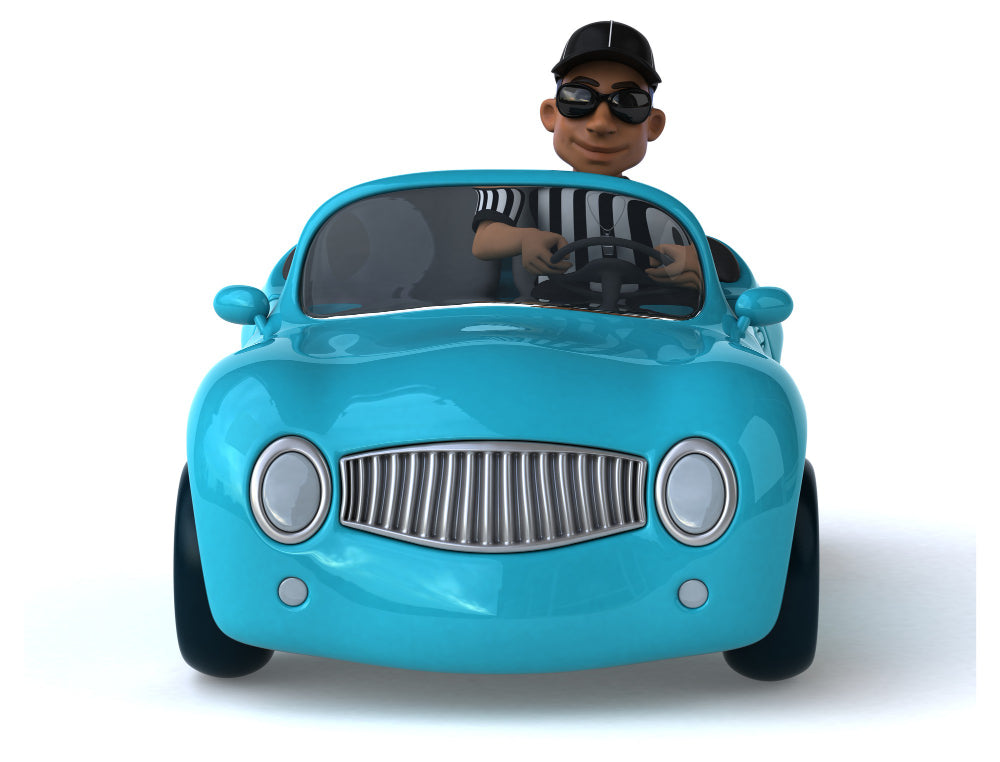The Art of 2D to 3D Modeling: Exploring the Creative Possibilities

In the ever-evolving world of digital design, 2D to 3D modeling stands as a transformative process that converts two-dimensional models into mesmerizing three-dimensional designs. This technique breathes life into static images, adding depth, realism, and interactivity. By leveraging the power of 2D to 3D modeling, artists and designers can unlock a whole new level of creativity and bring their visions to life in stunning detail. From architects envisioning architectural marvels to animators crafting immersive worlds, the significance of 2D to 3D modeling cannot be overstated. The ability to create captivating 3D designs opens up a vast array of possibilities for visual expression, storytelling, and problem-solving.
I. Understanding 2D to 3D Modeling
Before we embark on our journey, let's clarify the fundamental concepts. A 2D model represents an object or scene in a two-dimensional space, typically using length and width dimensions. On the other hand, a 3D design encompasses a three-dimensional representation, incorporating length, width, and depth. The conversion from 2D to 3D modeling involves adding the crucial element of depth to transform flat images into immersive, lifelike creations. By introducing this third dimension, artists can create intricate details, explore spatial relationships, and provide a sense of realism that captivates the viewer.
a. The Benefits and Applications of 2D to 3D Modeling
The benefits of 2D to 3D modeling are manifold. Whether it's architectural visualization, product prototyping, or character animation, 2D to 3D modeling provides a versatile toolset for visual communication and problem-solving. Moreover, it enables interactive experiences, as users can explore the 3D environment from different angles and perspectives. Additionally, 2D to 3D modeling plays a vital role in 3D printing, as it facilitates the creation of printable models that can be physically realized.
b. The Relevance of 3D Modeling for 3D Printing
One of the exciting applications of 2D to 3D modeling is its relevance to 3D printing. With the growing popularity of additive manufacturing, designers and enthusiasts can transform their virtual 3D models into tangible objects. By leveraging 2D to 3D modeling techniques, they can optimize designs for 3D printing, ensuring structural integrity, intricate details, and seamless integration of components. Whether it's creating prototypes, personalized products, or intricate sculptures, the combination of 2D to 3D modeling and 3D printing opens up a world of possibilities for manufacturing, artistry, and innovation.
II. Exploring the World of 3D Assets
In the expansive world of 2D to 3D modeling, 3D asset stores play a pivotal role. These online marketplaces act as treasure troves, offering an extensive collection of pre-made 3D models and assets created by talented artists and designers from around the globe. They provide a convenient and accessible resource for those seeking ready-made 3D models to enhance their projects. From furniture and vehicles to characters and environments, 3D asset stores cater to a diverse range of industries and creative pursuits.
a. How to Find and Buy 3D Models for Various Projects
Finding and acquiring the right 3D models for your specific projects is essential for unleashing your creativity. 3D asset stores provide intuitive search functions and categorization, enabling you to explore and filter models based on your requirements.
b. The Importance of High-Quality 3D Models
When it comes to 2D to 3D modeling, the quality of the assets you utilize can significantly impact the final outcome. High-quality 3D models, crafted with attention to detail, realistic textures, and optimized geometry, elevate your projects to new heights. They not only save you time by providing a solid foundation to build upon but also enhance the overall aesthetics and believability of your designs. Investing in top-notch 3D models from reputable asset stores ensures that you have access to the best resources and maximizes the potential of your creative endeavors.

III. The Process of 3D Model Creation
Creating a 3D model involves a series of steps that bring imagination to life.
i. It begins with conceptualization, where ideas take shape and vision starts to form.
ii. Next comes the process of asset making, which entails creating the foundational elements of the model, such as geometric shapes, textures, and materials.
iii. Once the assets are in place, the intricate art of digital sculpting takes center stage, allowing artists to shape and refine their models with precision and attention to detail.
iv. Finally, the model goes through optimization and refinement to ensure it is ready for its intended purpose, be it animation, visualization, or 3D printing.
a. Explanation of Asset Making and Its Role in 3D Modeling
Asset making is a crucial aspect of 3D modeling, as it lays the groundwork for the final model. This step involves creating the building blocks of the 3D model, including geometric shapes, textures, and materials. Assets provide the necessary structure and visual elements that contribute to the overall realism and aesthetics of the model. By meticulously crafting and manipulating assets, artists can breathe life into their creations, infusing them with the desired characteristics and qualities that make them stand out.
b. Digital Sculpting and Its Significance
Digital sculpting is a powerful technique in 3D modeling that allows artists to shape and refine their models with incredible precision and control. By employing digital sculpting tools, artists can mold virtual clay-like substances, adding fine details, contours, and organic shapes to their models. This technique enables the creation of intricate designs that exhibit depth, realism, and artistic expression. Digital sculpting empowers artists to bring their imagination to life, transforming raw models into visually captivating masterpieces.
IV. Techniques for Transforming 2D to 3D
The world of 3D modeling offers a myriad of techniques that artists can employ to create stunning three-dimensional designs. From box modeling and polygonal modeling to spline modeling and parametric modeling, each technique presents unique approaches and workflows. These techniques allow artists to sculpt, extrude, and manipulate virtual objects to achieve their desired vision.
a. Exploring Visualization Techniques for Dimensional Conversions
The transformation from 2D to 3D requires visualization techniques that enable artists to navigate the additional dimension and bring depth and perspective to their designs. Techniques such as wireframing, shading, and lighting play vital roles in creating realistic and immersive 3D models. Visualization techniques allow artists to understand the spatial relationships, proportions, and lighting effects that are crucial for the success of their models. By leveraging these techniques, artists can create visually stunning and dynamic 3D compositions.
b. The Role of Digital Artistry in the Transformation
Digital artistry is a key component in the process of transforming 2D models into mesmerizing 3D designs. Artists utilize their creative skills, understanding of aesthetics, and knowledge of design principles to infuse their models with artistic expression. Through the use of colors, textures, and visual effects, digital artists can evoke emotions, tell stories, and create captivating visual experiences. The role of digital artistry in the transformation from 2D to 3D is pivotal, as it adds the final touches that make the models come alive with artistic flair.
V. Creative Applications of 2D to 3D Modeling
2D to 3D modeling offers limitless possibilities for design innovation. It revolutionizes architectural visualizations, product design, and virtual environments, enabling designers to explore intricate details and experiment with design iterations. This technique fosters innovation, pushing boundaries to create groundbreaking solutions and designs.
a. Examples of Creative Possibilities and Artistic Transformations
From breathing life into characters and environments to conveying unique artistic visions, 2D to 3D modeling unlocks awe-inspiring creative possibilities. Artists can transform flat 2D concepts into immersive 3D worlds, creating works that evoke emotions and inspire awe through realistic renders or stylized interpretations.
b. The Impact of 2D to 3D Modeling in Various Industries
2D to 3D modeling's impact extends beyond art and design. It revolutionizes industries such as architecture, engineering, gaming, advertising, and film production. Architects effectively communicate their designs using 2D to 3D modeling, while engineers prototype and simulate complex structures. Game developers create immersive virtual worlds, and various sectors benefit from enhanced workflows, communication, and limitless possibilities.

VI. Tools and Software for 2D to 3D Modeling
The world of 2D to 3D modeling is supported by a variety of powerful software tools that cater to the specific needs and preferences of artists and designers. From industry-standard software like Autodesk Maya and 3ds Max to open-source solutions like Blender, these tools offer comprehensive capabilities for creating, sculpting, and refining 3D models. Each software has its own unique features, workflows, and learning curves, enabling users to find the perfect fit for their projects and artistic style.
Modeling software provides a wide range of features and capabilities that empower artists to bring their creative visions to life. From intuitive user interfaces and extensive libraries of pre-built assets to advanced rendering engines and animation tools, these software packages offer a comprehensive set of tools to facilitate the 2D to 3D modeling process. Artists can leverage features such as parametric modeling, UV mapping, texture painting, and animation controls to create intricate and visually stunning 3D models.
VII. The Design Process: 2D to 3D Rendering and Visualization
Embarking on transforming a 2D model into a captivating 3D design follows a systematic design process. Starting with conceptualization, artists visualize the desired 3D outcome based on the 2D reference. They create a basic 3D structure, known as blocking, to establish form and proportions. Adding intricate details refines the model's shape and texture. Finally, optimization and refinement ensure the model meets desired specifications.
a. Explaining the Importance of Rendering and Visualization Techniques
Rendering and visualization techniques breathe life into designs. Rendering generates photorealistic representations, considering lighting, materials, and textures. It aids evaluation and adjustments. Visualization techniques allow comprehensive exploration of the model's aesthetics and functionality. Artists leverage these techniques to showcase designs with enhanced realism, aiding effective communication and decision-making.
b. The Challenges and Best Practices in the Design Process
The 2D to 3D design process presents unique challenges. Maintaining the integrity of the original 2D design while translating it into 3D requires accurate proportions, realistic texturing, and smooth geometry. Optimizing the model for efficient rendering and effective 3D printing requires balancing visual appeal and practicality. Overcoming these challenges involves staying updated on industry best practices, refining skills, and seeking feedback from peers and experts.
VIII. Advancements in 2D to 3D Modeling
From advancements in modeling software to improved rendering techniques and realistic material simulation, artists and designers now have access to powerful tools that enhance their creative capabilities. Exploring these trends allows for staying at the forefront of the industry and pushing the boundaries of what is possible in 2D to 3D modeling.
a. The Future of 2D to 3D Modeling and Its Potential Impact
As technology continues to advance, the future of 2D to 3D modeling holds immense potential. This section delves into the potential impact of 2D to 3D modeling across various domains, such as architecture, entertainment, healthcare, and education. From revolutionizing design processes to enabling immersive experiences, the integration of 2D to 3D modeling in emerging technologies and industries is set to reshape how we interact with the digital world. By embracing these advancements and anticipating future developments, artists and designers can position themselves at the forefront of this transformative field.

b. Emerging Technologies and Their Influence
Emerging technologies play a pivotal role in the advancements of 2D to 3D modeling. This section highlights some of the emerging technologies and their influence on the field. For instance, the digitization of physical objects through 2D to 3D scanning and reconstruction techniques allows for the creation of accurate digital replicas. Virtual reality (VR) and augmented reality (AR) technologies provide immersive platforms for experiencing and interacting with 3D models in real-time. These technologies offer exciting possibilities for collaboration, visualization, and user engagement in the realm of 2D to 3D modeling.
IX. Conclusion
Throughout this blog, we have explored the captivating art of 2D to 3D modeling and the multitude of creative possibilities it unlocks. From breathing life into static designs to enabling interactive experiences, this transformative process empowers artists and designers to realize their visions in breathtaking detail.
To fully embrace the creative potential of 2D to 3D modeling, having access to high-quality 3D models and assets is essential. Look no further than my3dmodel, a reliable source that offers a wide range of meticulously crafted 3D models. With their expertise, you can elevate your projects to new heights and bring your artistic visions to life. In a world where imagination knows no limits, 2D to 3D modeling stands as a testament to the transformative power of art and technology. As you embark on your own creative endeavors, remember that the possibilities are endless.




